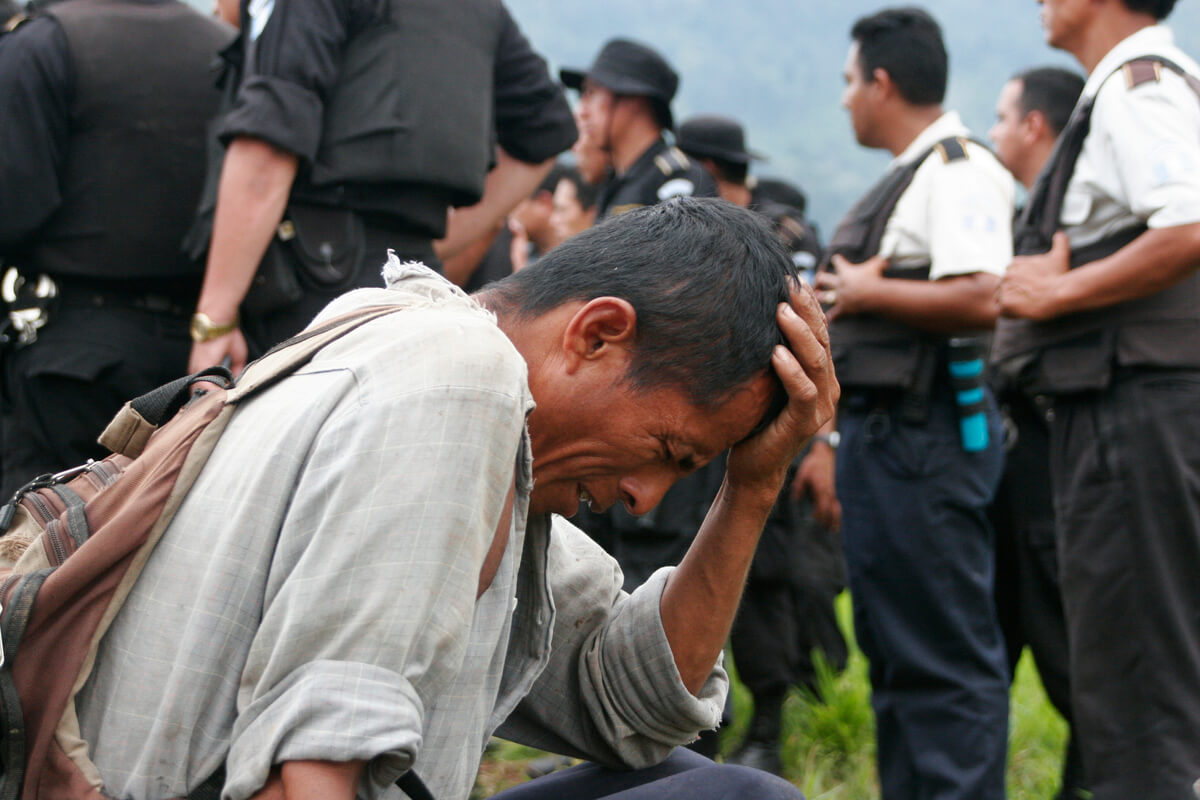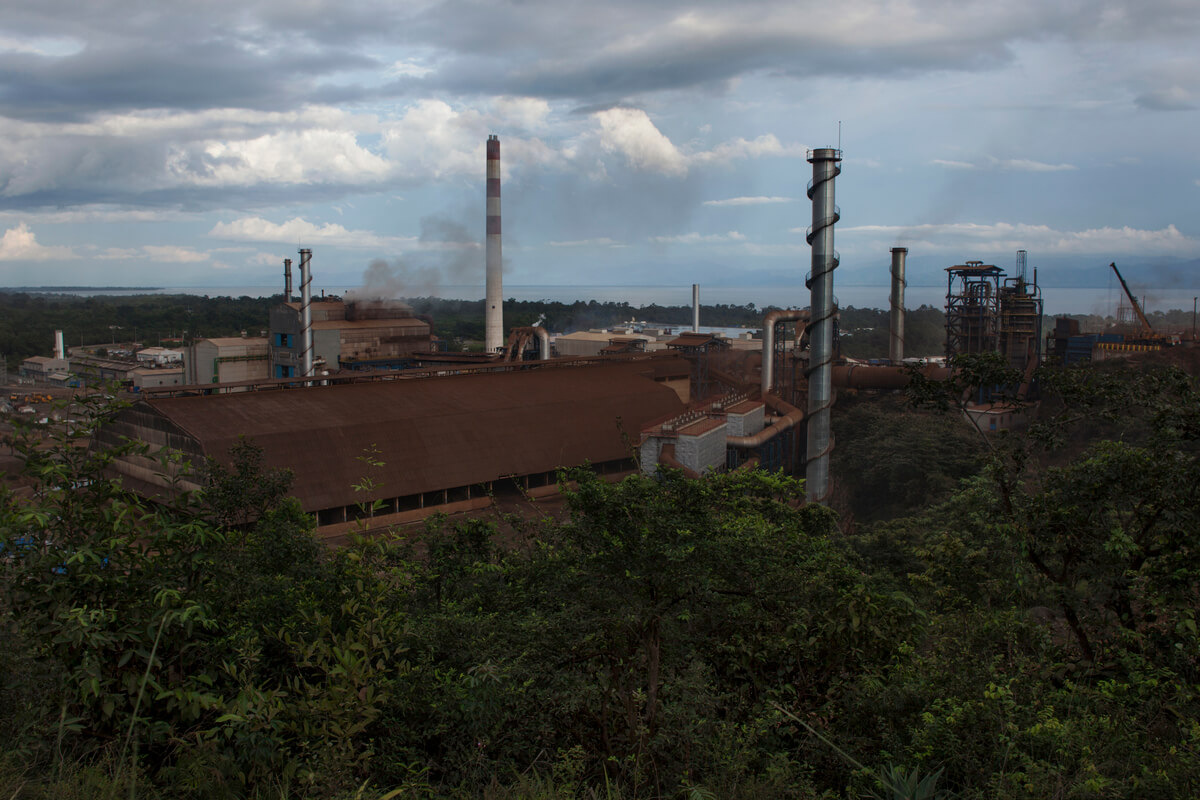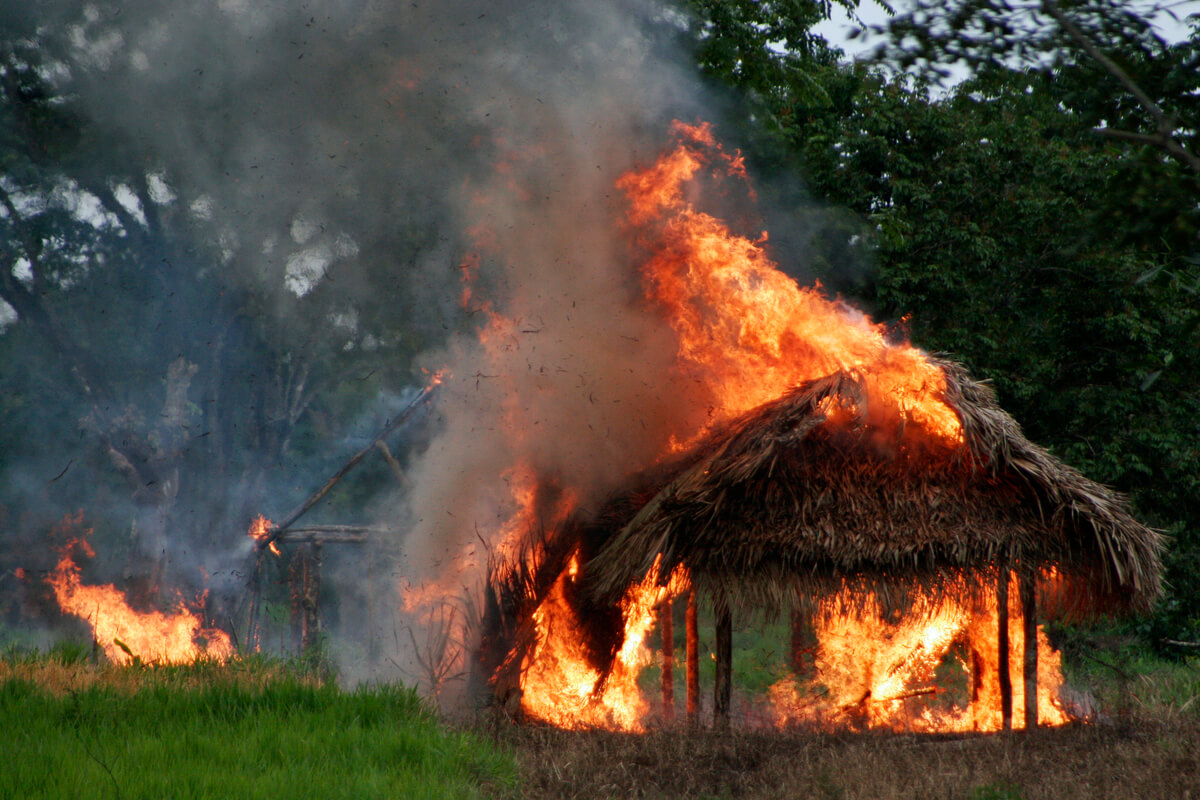
While much of the controversy surrounding Canada’s extractive industry centers on oil and gas projects like SWN Resources’ drilling plans in New Brunswick, Enbridge’s Line 9 pipeline and the widely felt impact of Tar Sands extraction in Alberta, there is a significant lack of debate concerning Canada’s larger and much more influential mining sector.
It’s estimated that 75% of the world’s mining and exploration companies are based in Canada. Collectively, they account for 42 billion dollars of Canada’s gross domestic product, making mining and exploration one of Canada’s most economically powerful sectors. Some 40% of global mining capital is raised on the Toronto Stock Exchange. The impact of Canada’s mining sector, however, goes far beyond mere facts and figures.
Wherever Canadian mining companies operate, they have an indelible imprint on the social, political and environmental realities in which they insert themselves. In countries that are politically unstable or where a culture of impunity is permitted to thrive, that imprint can span generations with successive mining companies following in the footsteps of their predecessors. Such is the legacy of shame that the Maya Q’eqchi people in Guatemala have been forced to endure for the last half century.

The “Fenix” Mining Project in El Estor, Guatemala. Established in 1965 as the EXMIBAL nickel mine owned by Canadian mining firm INCO, the project was transferred to the Guatemalan Nickel Company (CGN) in 2005 after the expiration of the original 40-year license. CGN was the local subsidiary of Canadian Skye Resources, a junior mining company comprised of former INCO directors. Skye was bought by HudBay in 2008, and the project sold to the Russian-based Solway group in 2011. (Photo: James Rodríguez/mimundo.org)
For the average Canadian, the effects of mining and other forms of resource extraction are not immediately apparent; indeed, those who tend to benefit the most from such projects also tend to be shielded from the harsh realities that befall those who are affected by them, as Mi’kmaq lawyer and activist Pam Palmater told Intercontinental Cry (IC).
“People in far-away cities may enjoy oil for their cars, diamonds from their city jeweler, or minerals needed to build cities and never have to see the housing crisis and lands stripped of trees and wildlife, or see the deformed fish and contaminated water.”
“The people who benefit are separated from the people who pay the social and environmental price,” she added.
For more than two years, Palmater, who leads the Centre for Indigenous Governance at Ryerson University, worked closely with Mathias Colomb Cree Nation (MCCN) Chief Arlen Dumas, who, in 2013, served two Stop Work Orders to Hudson Bay Mining and Smelting Ltd (Hudbay) in connection to the Lalor mine project in Northern Manitoba. According to Chief Dumas, Hudbay failed to obtain MCCN consent to operate its proposed mine, situated on unceded MCCN lands. Soon after the Stop Work Orders were delivered, Hudbay sought out and obtained a court injunction against Palmater and Chief Dumas, restraining them and others from interfering with access to the company’s property.
A long line of Canadian mining companies have adopted a similar modus operandi, avoiding their constitutional obligation to consult, accommodate or even inform First Nations before seeking approval of mining projects that could adversely affect their indigenous rights.
Far more companies have been under fire for human rights abuses and other transgressions that took place outside of Canada. Among them, there is Barrick Gold, Fortuna Silver, Sherritt International, IAMGOLD, Curis Resources, Tahoe Resources Inc., Denison Mines Corp., First Majestic Silver, TVI Resource Development, Inc., Nevsun Resources Ltd., New Gold Inc., and GoldCorp.
In their unyielding pursuit for justice and accountability, Indigenous Peoples are presently pursuing at least three of these companies in Canada’s court system. Foremost among them is Hudbay Minerals.
In 2010, Toronto-based law firm Klippensteins Barristers & Solicitors filed a set of civil suits against Hudbay Minerals on behalf of Maya Q’eqchi people in Guatemala who suffered three separate injustices in connection to the Fenix Mining Project in El Estor municipality near the Pacific Coast.
The ongoing case against Hudbay Minerals centers on the actions of its former subsidiary Guatemalan Nickel Company (CGN) and security forces hired by CGN between 2007 and 2009, specifically the murder of Adolfo Ich Chaman, a respected community leader; the attempted murder of German Chub, who was paralyzed after being shot at close range; and the gang rape of eleven women.
The case is widely considered to be a major step forward to holding the Canadian mining sector to account for its actions abroad.
The story of Hudbay in Guatemala goes back several decades to another Canadian mining company, INCO (now Brazilian company Vale). Linking together the history of INCO and Hudbay in this Central American country is crucial to understanding not only the Canadian mining sector but also its role around the world.
The violence against Indigenous Peoples who have opposed mining in Guatemala should be viewed as part of the wider violence that swept through the country in the 1950s when a military coup overthrew a democratically-elected government. “The history of INCO in Guatemala is [in its simplest form] the history of the military coup in 1954 and then the aftermath of that military coup”, Graham Russell, director at Rights Action network, stated in an interview with IC.
From 1944 to 1954 two nationalist, reformist and capitalist regimes attempted to modernize and equalize the country[1]. Part of this effort stemmed from a moderate agrarian reform bill in 1952 that would have redistributed hundreds of thousands of acres of land to landless peasants. This bill greatly affected the United States-based United Fruit Company (UFC), which was at the time the largest landholder and employer in Guatemala. Seeing the bill as a threat to its deeply entrenched economic interests, UFC hired legendary public relations expert Edward Bernays to carry out an intense misinformation portraying then-president Jacobo Arbenz Guzmán as a communist threat. While Bernays was busy winning hearts and minds, the company carried out an equally energetic lobbying effort back home to convince lawmakers and the U.S. public that Guatemala desperately needed a regime change.
Once U.S. President Dwight D. Eisenhower came to office, it wasn’t long before he authorized Operation PBSUCCESS, a covert op in which the United States Central Intelligence Agency (CIA) funded, armed, and trained 480 men led by Carlos Castillo Armas, the first of many dictators to succeed Guatemala’s presidency.
A long and brutal civil war ensued that would – over the course of 36 years – take the lives of more than 200,000 civilians and displace more than 1.5 million, culminating in a genocidal rampage against the Maya in the 1980s.
INCO had its own role to play in this vicious circle of violence. The Guatemalan military repeatedly used the company’s airplane landing strip to bring in soldiers and INCO trucks to transport them to Maya Q’eqchi lands for de-population. Graham Russell told IC that INCO’s position in the mining industry was a key factor as well, explaining that “…at this point (INCO) was the biggest private investor in all of Central America, not just Guatemala. These brutal military regimes and the wave of brutal violence starting in the late 60s and all through the 70s was directly associated to INCO’s mining interests in Guatemala.”
INCO was able to gain its status in Central America by cultivating a monopoly on nickel extraction. The company controlled nearly 54 percent of the nickel market in the West. During the 1950s it controlled 75 to 80 percent of the US nickel market[2]. Part of building this monopoly also involved Nazi war profiteering. Prior to World War II, INCO arranged a cartel agreement with the German company I.G.Farben to allow the stockpiling of nickel for the Nazi war effort[3].
INCO and the U.S Hanna mining company formed Izabal Mining Operations Company (EXMIBAL), a subsidiary company, to operate in Guatemala in 1962. EXMIBAL attained a tax-exemption in Guatemala in 1968 for leading what was described as an “industry of transformation”. Under its contract, EXMIBAL would pay the Guatemalan government $23,000, a tiny fraction of the estimated $10 million it would make each year between 1971 and 1980.
With the civil war well underway, both government and private security forces seized the opportunity to remove any indigenous-led opposition to mining under the auspices of fighting communism. Over 400 massacres were carried out during the period of the civil war, including the notorious slaughter of more than 100 Q’eqchi who were peacefully protesting EXMIBAL’s mining operation in El Estor.
Although there was considerable resistance to EXMIBAL’s mining operation and controversy over how little INCO paid in taxes what lead to the end of the company’s mining operation was the 1980 demand from the military government of Romeo Lucas Garcia that EXMIBAL pay 5% of the value of nickel extracted to the Guatemalan government. EXMIBAL suspended operations and left Guatemala, retaining rights to its mining concession.
In 2003, the former director of INCO became the president and executive of the Canadian company Skye resources. Days before the 40-year concession on the old EXMIBAL mine expired, it was transferred to CGN, the local subsidiary of Canadian Skye Resources (purchased by Hudbay Minerals in 2008). The concession also gave CGN the “right” to expel the Maya Q’eqchi. In 2006, the International Labour Organization (ILO), a branch of the United Nations, held that Guatemala broke ILO Convention 169, a binding international law, by failing to carry out free and prior consultations with the Maya Q’eqchi. Five years prior to this, in 2001, the constitutional court of Guatemala held that the property rights of the land in question belonged to the Maya Q’eqchi. Both rulings were ignored by the Guatemalan government and CGN.
As if tearing a page straight out of Guatemala’s civil war, CGN proceeded to order the eviction of five indigenous communities from the concession area. In January 2007, a combined police and military force arrived to carry the order out with help from residents from neighboring areas who were trucked in by CGN. During the eviction, hundreds of homes were burned to the ground and, in the community of Lote Ocho, a total of 11 women were gang raped by CGN’s mine security personnel and members of Guatemala’s police and military forces.

Homes in the community of Barrio La Revolucion are burned and destroyed by personnel hired by the Guatemalan Nickel Company (CGN). (Photo: James Rodríguez/mimundo.org)
One year later, HudBay Minerals purchased Skye Resources and promptly changed the company’s name to HMI Nickel Inc.
Despite the re-branding, however, the Maya Q’eqchi would continue to face a routine of repression with HudBay’s security forces shooting and killing Adolfo Ich Chaman and paralyzing German Chub Choc in 2009. One year later, Angelica Choc, the wife of Adolfo Ich Chaman, announced her intent to sue HudBay Minerals and its subsidiary in Canada.
Eager to evade a potentially catastrophic ruling, HudBay Minerals promptly sold CGN, the Fenix mine and its other Guatemalan assets to the Cyprus-based Solway Investment Group. The sale, however, did not deter Canada’s courts from agreeing to hear the case(s) against Hudbay.
A favourable ruling could have far-reaching implications not only for Hudbay but for the entire Canadian mining sector. As Graham Russell explained to IC,
“…there is a growing number of Canadians becoming aware that there are hundreds, if not more, [Canadian mining companies] operating in many places around the world [that] are often involved in creating environmental harm or contributing directly or indirectly in serious human rights violations including killings and gang rapes.”
The possibility that anyone who suffers at the hands of a Canadian mining company could turn to Canada for their day in court could very well change the face of the industry.
Katherine Fultz, visiting Instructor of Anthropology at Pitzer College in Claremont, CA, who has studied opposition to mining in the Highlands of Guatemala, told IC by phone that community referendums as a tool to resist mining projects are also gaining popularity among mine-affected communities:
“It actually started elsewhere in Latin America. The first one was held in Peru and a number were held in Argentina and later in Columbia … Guatemala has held more than any other country with more than sixty votes at this point. Over half a million people have participated in them.”
These community referendums have rejuvenated anti-mining activism in the highlands of Guatemala leading many communities to take direct legal action against the Guatemalan government to protest mining on a national level.
Recently, the Guatemalan constitutional court ordered the suspension of two hydro-power mega projects (Vega I and Vega II) for failure to properly consult with affected Indigenous communities. Other mining projects have also been suspended due to lack of consultation with indigenous communities. In one case, the rural community of Zunil in the municipality of Quetzaltenango carried out referendums (consulta) declaring their territory to be a mining free zone.
An avenue that Canadians can use to stop international human rights abuses by mining companies may one day be found in Canada. In 2009, Liberal MP for Scarborough-Guildwood John McKay introduced Bill C-300 as a private members bill to the Canadian House of Commons. The bill called for the creation of an ombudsperson that would oversee Canadian mining firms. Bill C-300 ultimately lost by six votes in 2009, even though the NDP and Liberals held a majority in the House of Commons at the time. McKay said in a recent interview that, although he thinks existing structures that oversee mining companies need to be strengthened, re-introducing the bill is a high priority for the Liberal government.
Instead of the provisions in Bill C-300, Canadian mining and extraction companies fall under “Building the Canadian Advantage” (BCA) which the Conservative government put in place instead of Bill C-300. Viewed by critics as an irresponsible PR gimmick, BCA moved Canadian International Development Agency (CIDA) funds to support community projects run by Canadian mining companies and created a Corporate Social Responsibility (CSR) councilor to mediate disputes between affected communities and mining companies. None of these provisions, however, are binding; and while there is strong language about protecting human rights in BCA they are little more than guidelines that companies are under no obligation to follow.
The historical and contemporary case of Canadian mining companies operating in Central America shows that one should have no illusions about the role these companies play around the world. While building more north-south solidarity and mine-affected communities holding referendums are positive steps on the road to justice, there is the bigger issue related to the way that mining is tied to larger social, political, environmental and economic realities.
In an interview with Canadian Dimension Magazine, Alain Deneault, who was sued along with his co-author and publisher by Barrick Gold for the exposé Noir Canada, ties together the issues of over-consumption and planned obsolescence to the mining industry. “If we could put all of these questions on the agenda at the same time, we could say, okay, maybe it’s worthwhile to dig that hole in that specific area because we need zinc, but we’ll use it carefully. We’ll exploit zinc carefully because we’ll make sure that what we dig out will be recycled in many objects that we will use.” Deneaut went on to advocate for the creation of a permanent and independent commission of inquiry that would have powers to not only inquire into the activities of corporations but also summon their representatives to appear and submit documents.
For now, the more the Canadian public is informed about the activities of Canadian mining companies, the better. Pam Palmater advocates for a broad approach to bring Canadian mining companies abuses to light and urges that we work together to fight for our collective futures:
“…the more the public knows about the destructive activities of mining companies, who’s really profiting and what it means for our collective futures, the better chance we have at forcing change through varied means used simultaneously – including protests, court cases, political pressure, shareholder pressure, advocacy at the international level and building allies amongst social justice activists, environmentalists, scientists, First Nations, other countries, politicians and legislators.”

Indigenous Peoples are putting their bodies on the line and it's our responsibility to make sure you know why. That takes time, expertise and resources - and we're up against a constant tide of misinformation and distorted coverage. By supporting IC you're empowering the kind of journalism we need, at the moment we need it most.